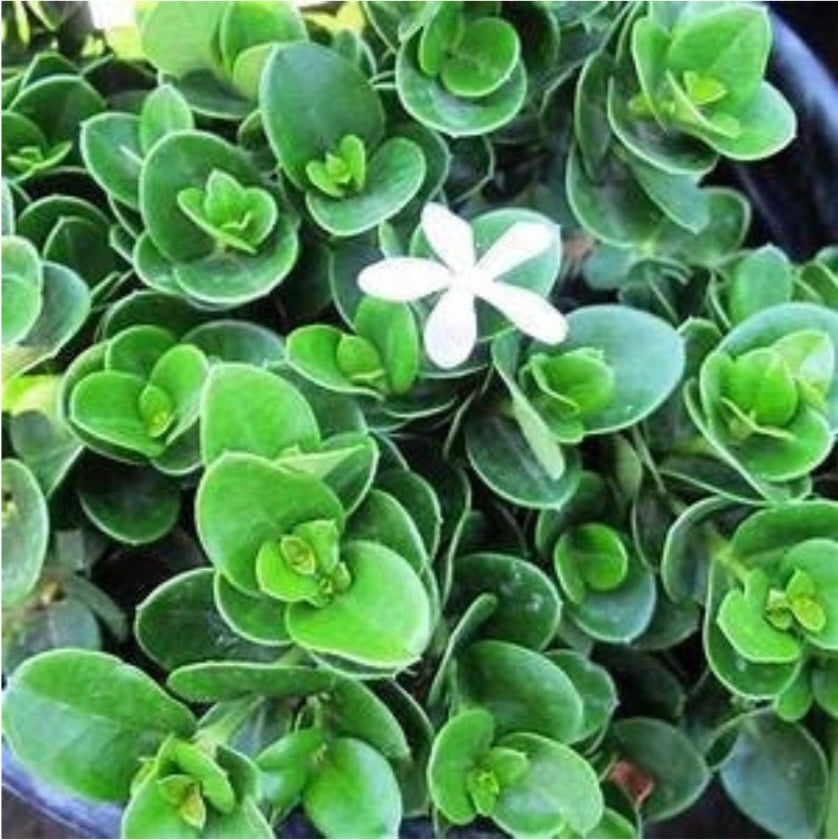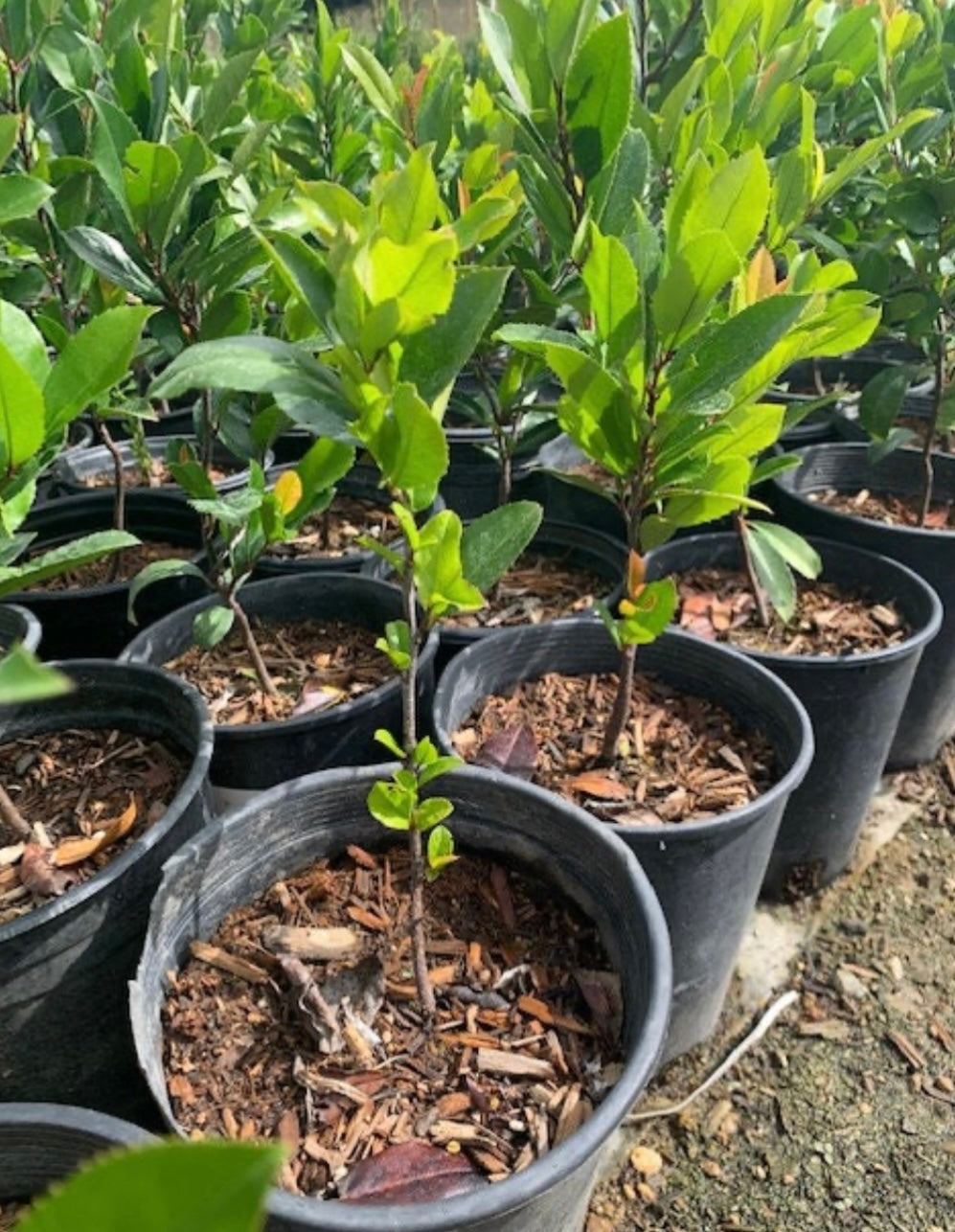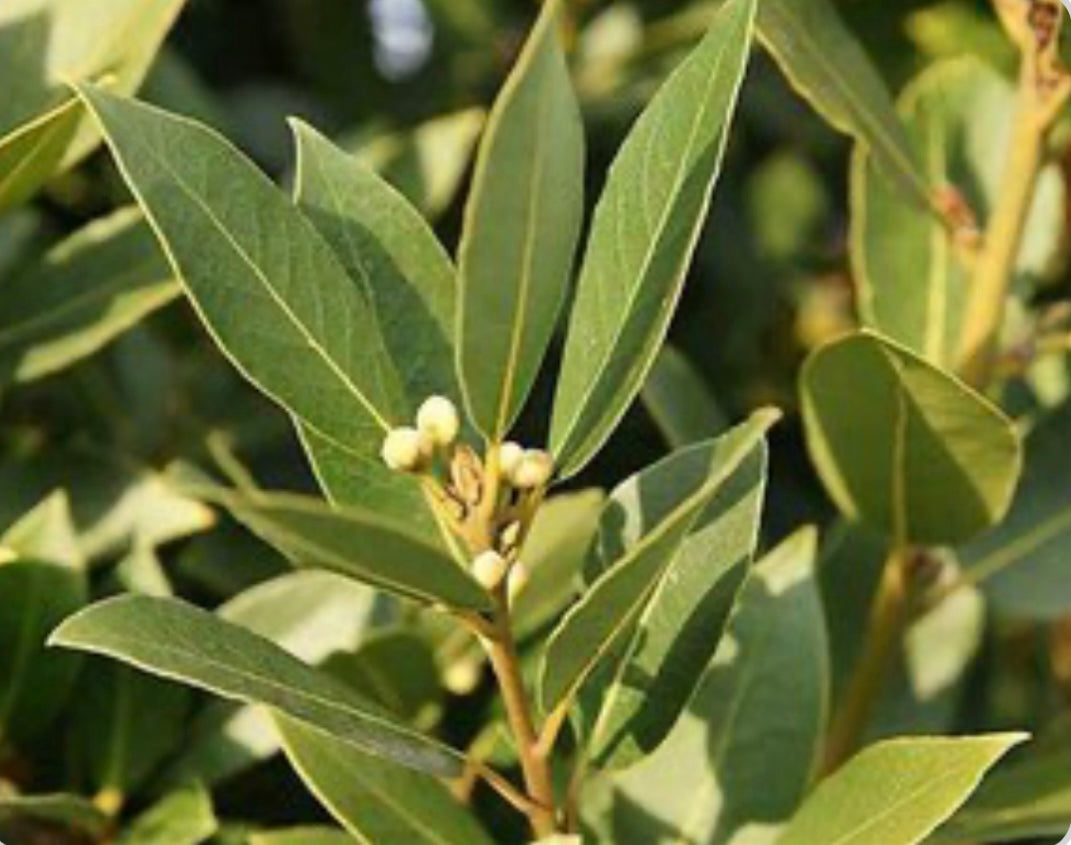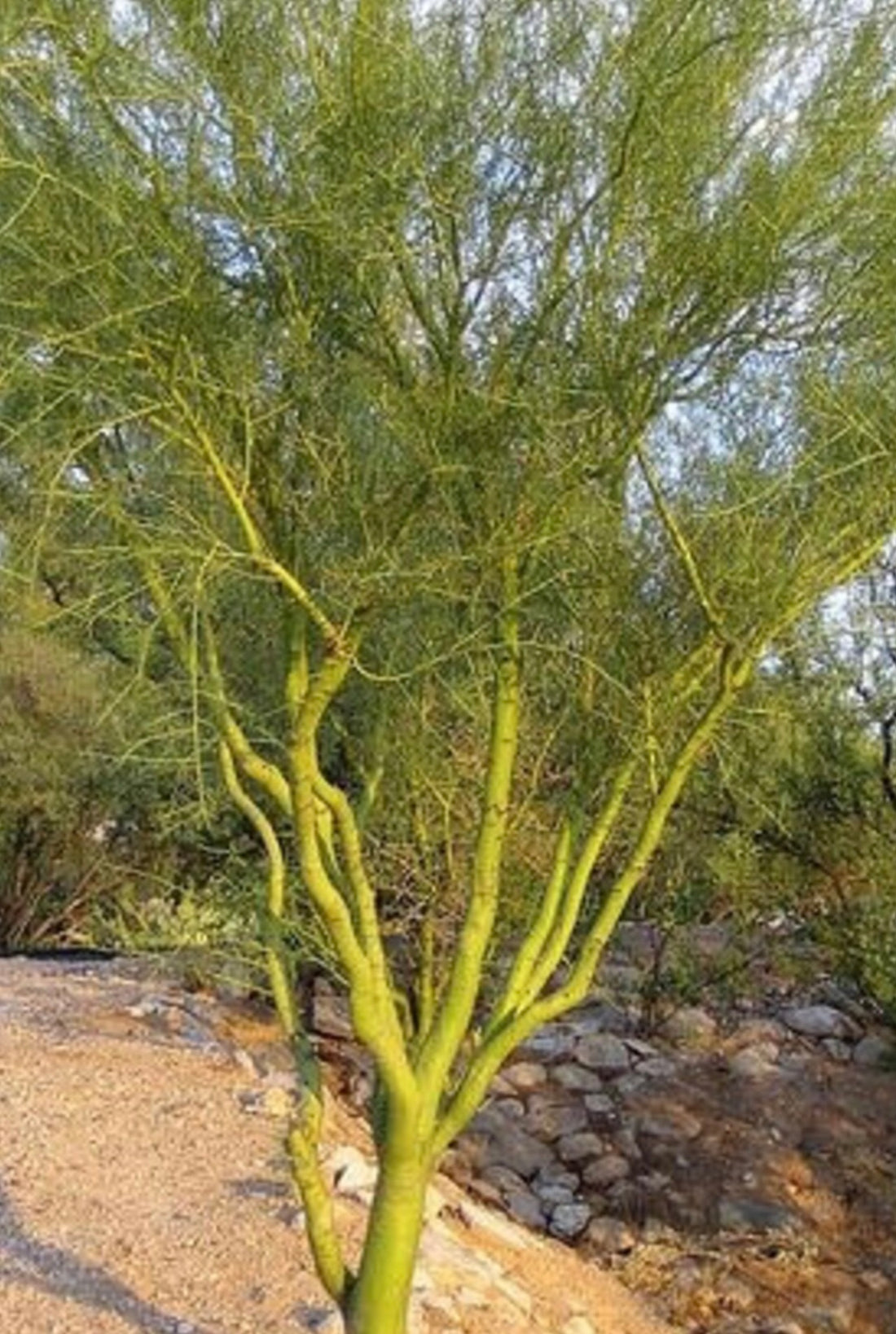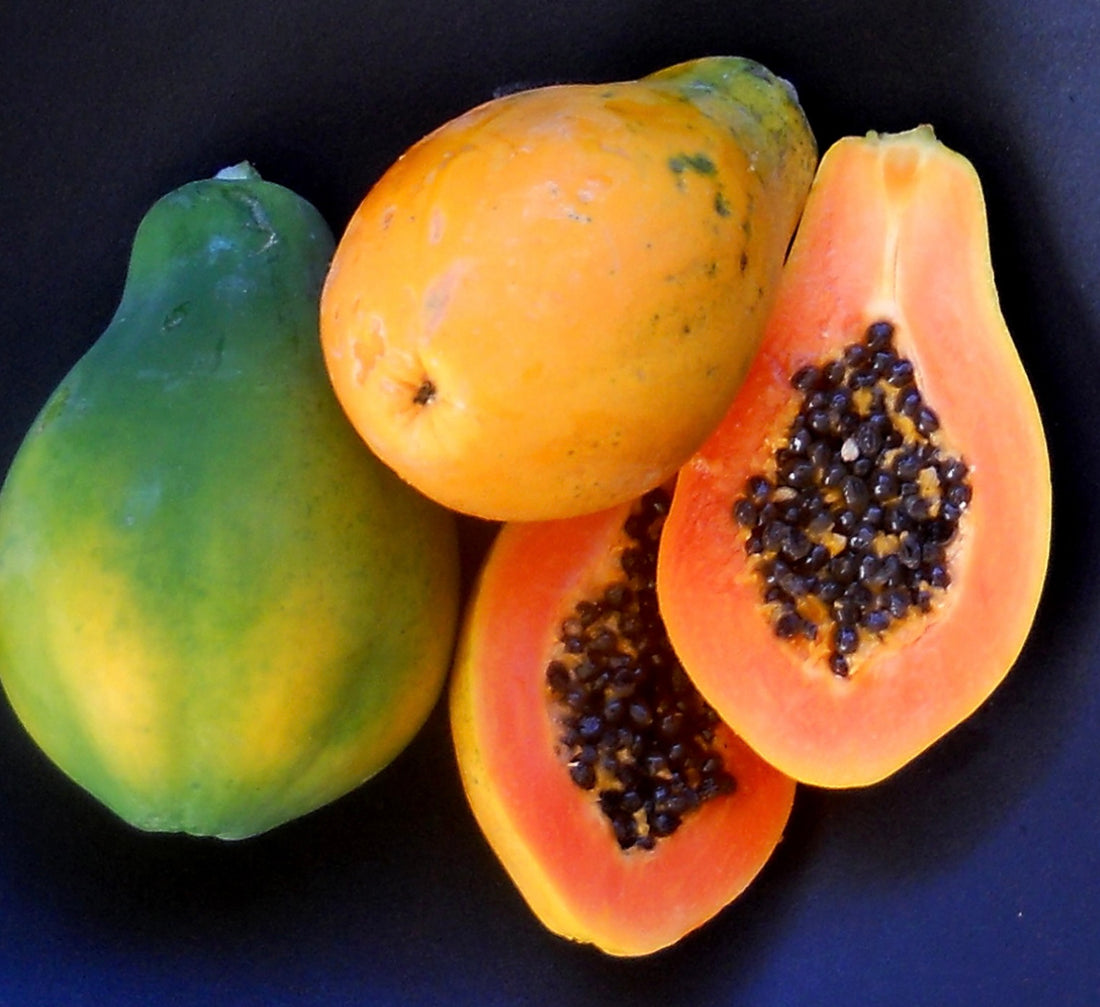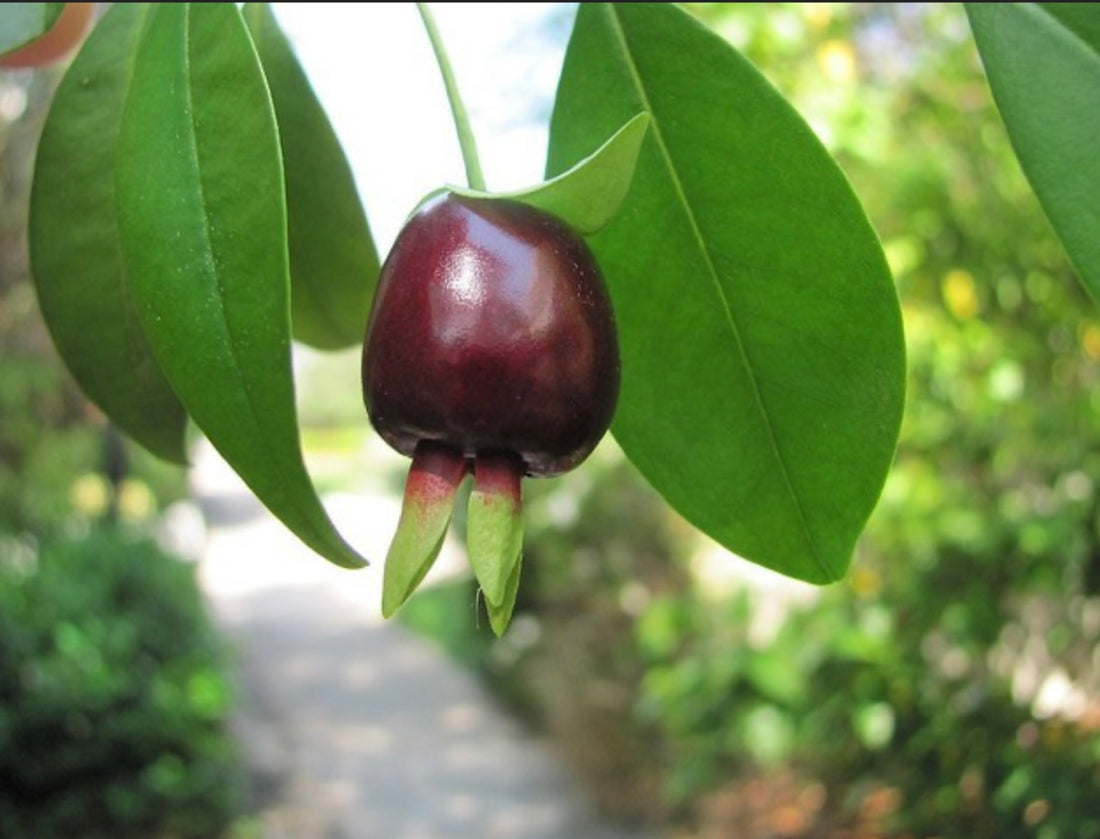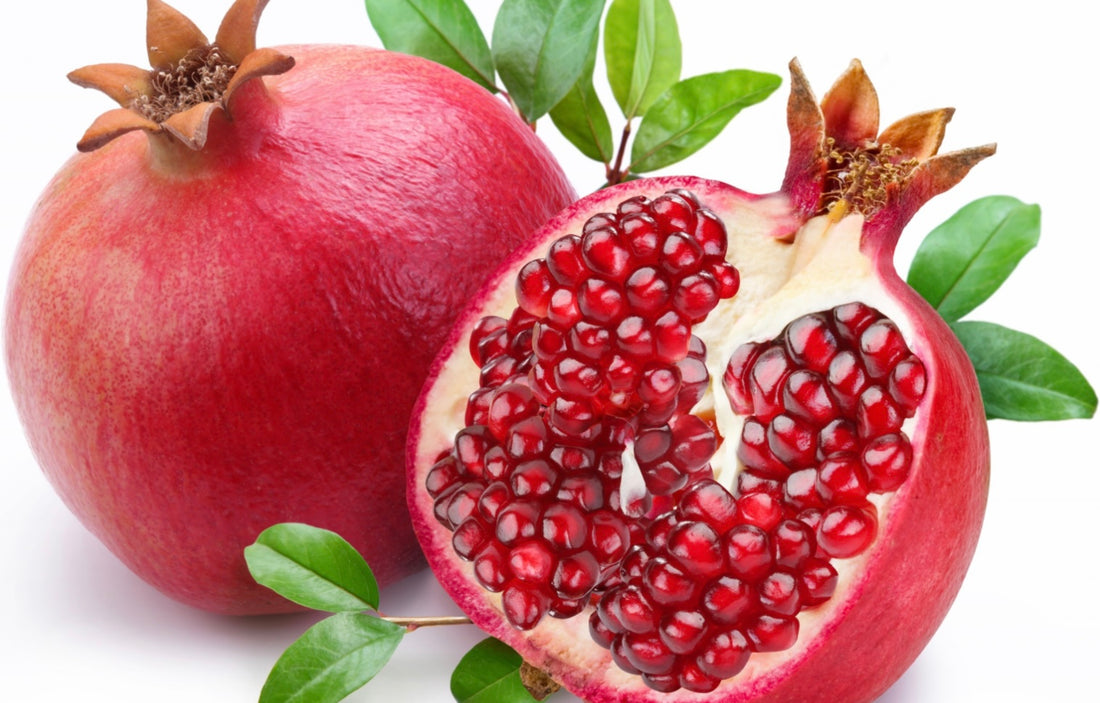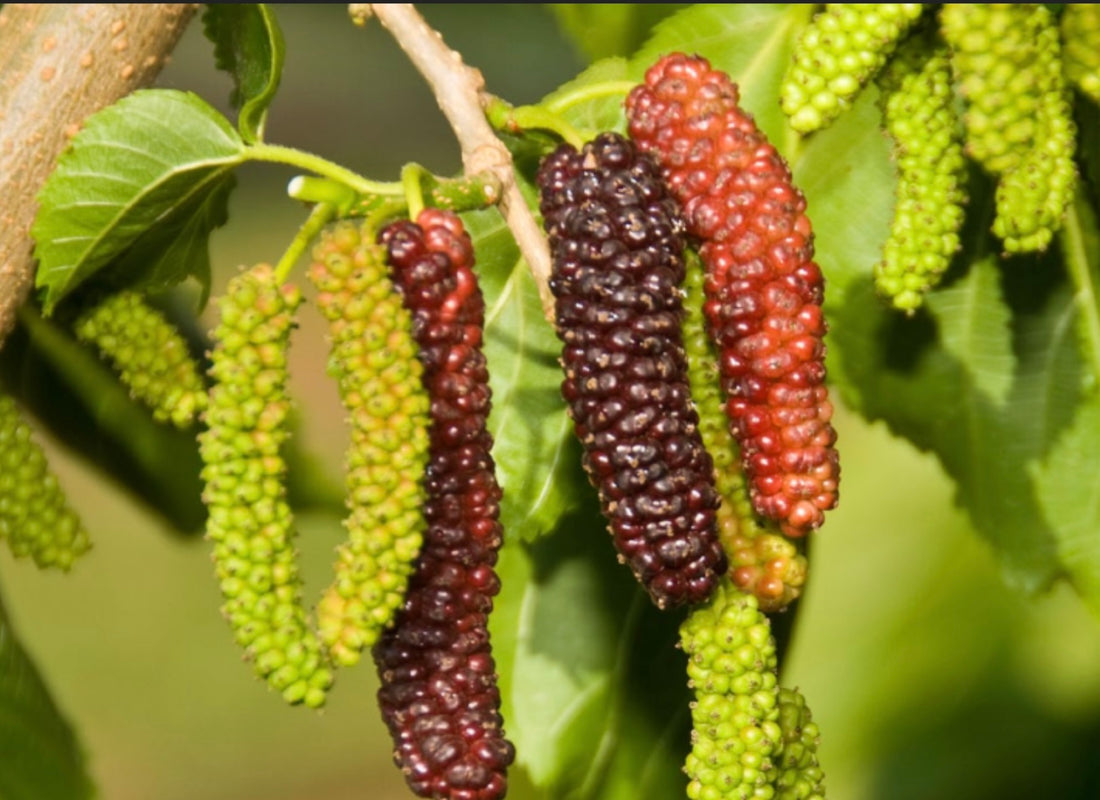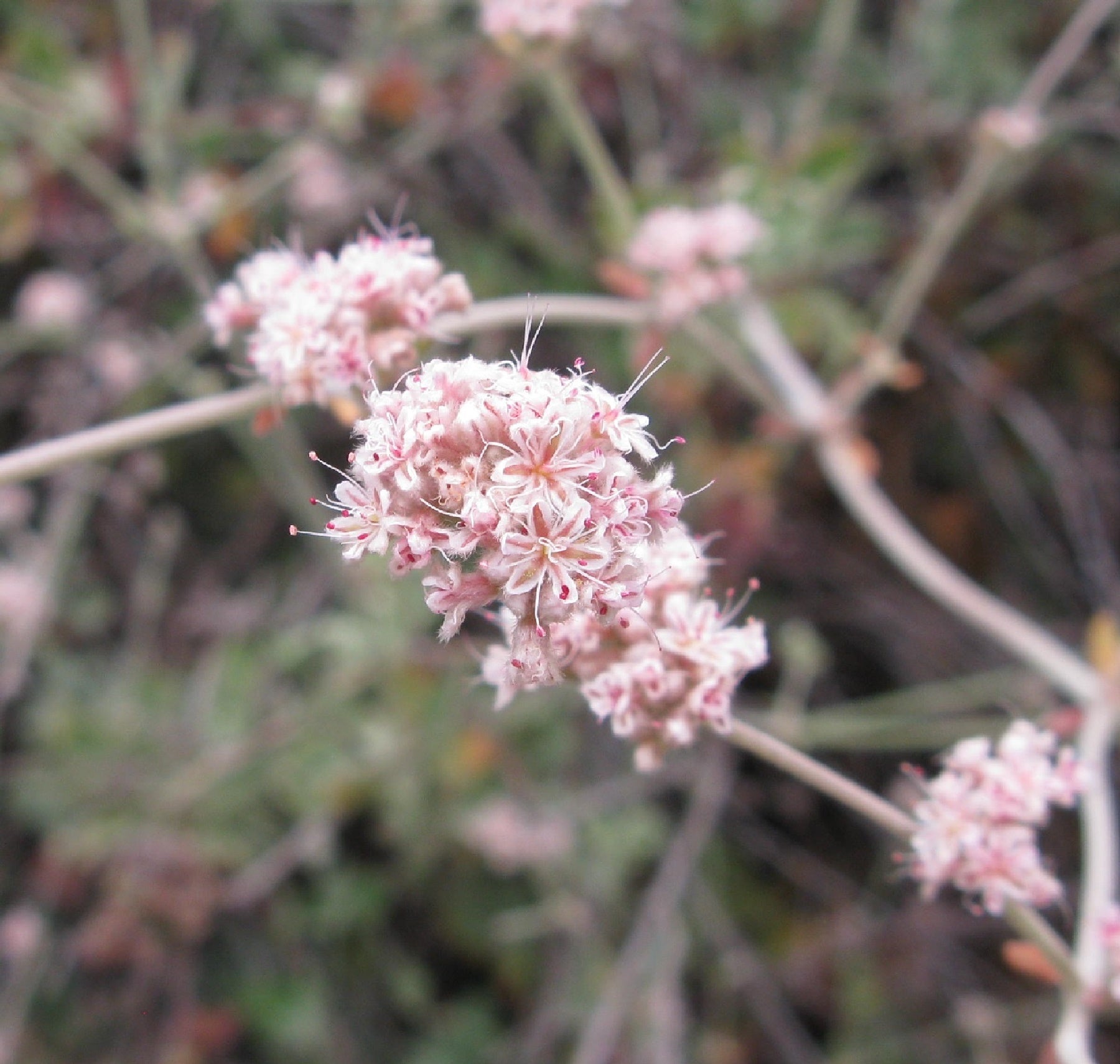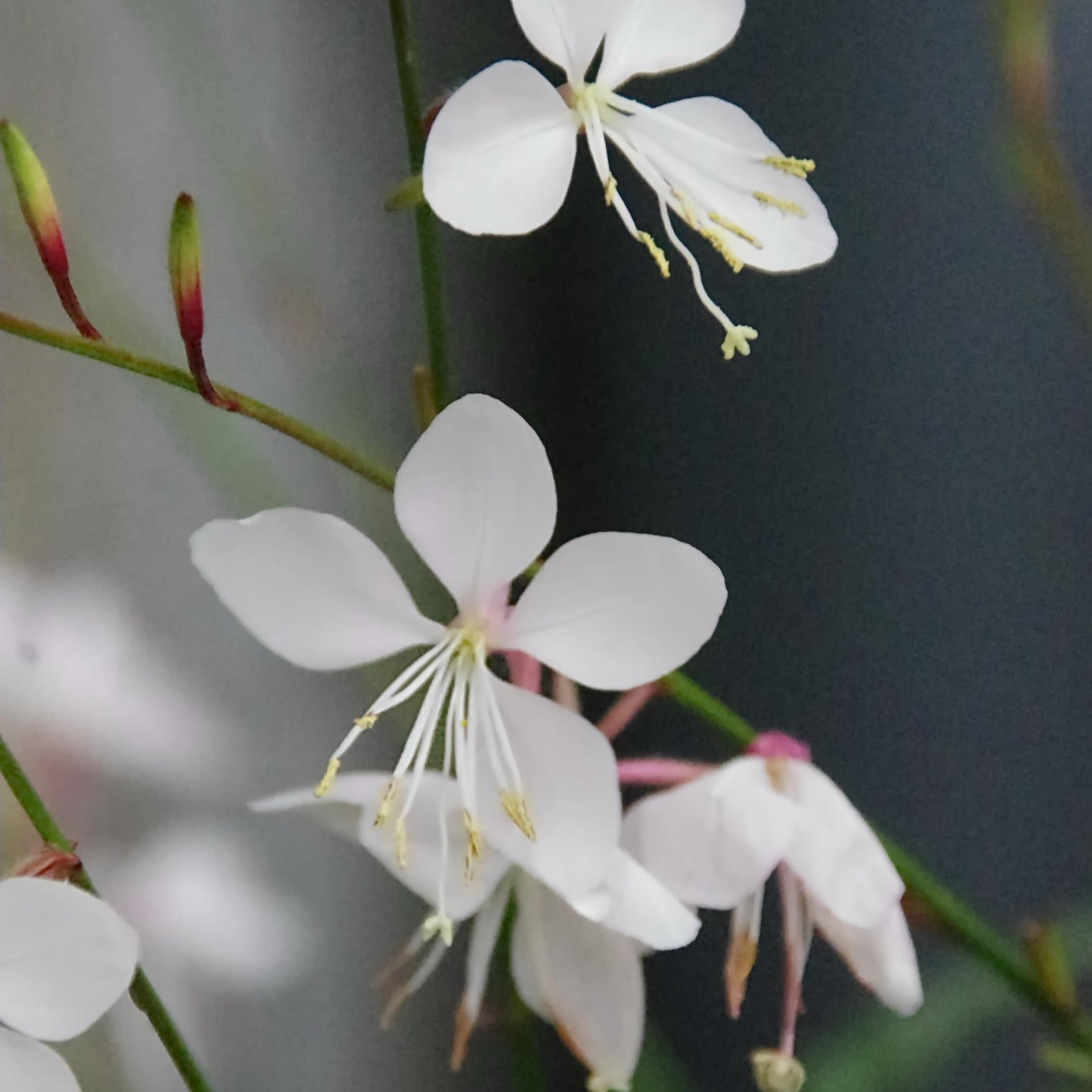Blogs
Carolina Laurel Cherry Tree
The Carolina Laurel Cherry Tree, also known as Prunus caroliniana, is a beautiful and versatile evergreen tree native to the southeastern United States
Learn moreOkinawa Spinach (Gynura crepioides): Complete Growing, Uses, and Benefits Guide
Okinawa spinach, or Gynura crepioides, is a perennial powerhouse that will provide you with a steady supply of edible greens
Learn moreLaurel Bay Leaf Tree
The Laurel Bay Leaf Tree (Laurus nobilis) is a popular Mediterranean evergreen with fragrant, dark green leaves
Learn moreJerusalem Sage: How to Grow, Care for, and Landscape with Phlomis fruticosa
The Jerusalem Sage (Phlomis Fruticosa) is a hardy evergreen shrub native to the Mediterranean region
Learn moreA Definitive Guide to the Edible Foorhills Palo Verde Tree
Have you ever heard of the Foothills Palo Verde tree? While it may not be as well-known as other edible plants, this tree offers a unique culinary experience that is worth exploring. In this blog post, we will delve into the fascinating world of the Foothills Palo Verde tree and discover its edible delights. What is the Foothills Palo Verde tree? The Foothills Palo Verde tree, scientifically known as Parkinsonia microphylla, is a small deciduous tree native to the southwestern United States and northern Mexico. It is characterized by its green bark, delicate leaves, and vibrant yellow flowers. While it is primarily valued for its ornamental qualities, this tree has a surprising secret – its edible parts! Which parts of the tree are edible? Several parts of the Foothills Palo Verde tree are edible and offer unique flavors and textures: 1. Flowers: The bright yellow flowers of the Foothills Palo Verde tree are not only visually stunning but also edible. They have a mildly sweet taste and can be used to add a pop of color to salads, desserts, or even brewed into a refreshing tea. 2. Seeds: The seeds of the Foothills Palo Verde tree are small, hard, and resemble peas. They have a nutty flavor and can be roasted, ground into flour, or used as a crunchy topping in various dishes. 3. Pods: The long, slender pods of the Foothills Palo Verde tree are edible when young and tender. They have a slightly sweet taste and can be cooked and enjoyed as a vegetable or added to stews and stir-fries. How to harvest and prepare the edible parts? Harvesting the edible parts of the Foothills Palo Verde tree requires some care and attention. Here are a few guidelines to follow: 1. Flowers: Harvest the flowers when they are fully open and vibrant. Gently pluck them from the tree, ensuring not to damage the surrounding branches. Rinse the flowers thoroughly before using them in your culinary creations. 2. Seeds: Collect the seeds when they are fully mature and dry. Shake the tree gently to release the seeds, then gather them from the ground. Remove any debris and store the seeds in an airtight container until you are ready to use them. 3. Pods: Harvest the pods when they are young and tender, usually in the spring or early summer. Cut the pods from the tree using a sharp knife or scissors. Remove the seeds and any tough fibers before cooking or consuming the pods. Exploring culinary possibilities The edible parts of the Foothills Palo Verde tree offer a range of culinary possibilities. Here are a few ideas to get you started: 1. Flower salad: Toss the vibrant yellow flowers into a fresh green salad for a burst of color and a subtle sweetness. 2. Roasted seed seasoning: Grind the roasted seeds into a flavorful seasoning that can be sprinkled over salads, roasted vegetables, or grilled meats. 3. Stir-fried pods: Sauté the young pods with your favorite vegetables and seasonings for a nutritious and unique stir-fry dish. Remember, when foraging for edible plants, it is essential to positively identify the species and ensure that the tree is free from pesticides or other contaminants. Next time you come across a Foothills Palo Verde tree, take a moment to appreciate its beauty and consider the culinary possibilities it holds. The edible parts of this tree are a hidden gem waiting to be discovered!
Learn morePapaya Tree
Have you ever tasted the sweet, juicy flesh of a ripe papaya? If not, you're missing out on a tropical delight that not only satisfies your taste buds but also provides numerous health benefits. In this blog post, we will explore the fascinating world of the papaya tree, its origins, cultivation, and the amazing properties of its fruit. What is a Papaya Tree? The papaya tree, scientifically known as Carica papaya, is a tropical fruit tree native to Central America and Mexico. It belongs to the Caricaceae family and can grow up to 30 feet tall. The tree has a single stem with large, palmate leaves at the top, giving it a distinctive appearance. How Does a Papaya Tree Grow? Papaya trees thrive in warm climates with well-drained soil and plenty of sunlight. They are typically grown from seeds, which are extracted from ripe papaya fruits. The seeds are then planted in a nursery or directly in the ground. Within a few weeks, the seedlings emerge, and with proper care and maintenance, they develop into mature trees within a year. Health Benefits of Papaya Papaya is not only delicious but also packed with essential nutrients and health-promoting compounds. Here are some of the key benefits of including papaya in your diet: 1. Rich in Vitamin C: Papaya is an excellent source of vitamin C, which boosts the immune system and promotes collagen production for healthy skin. 2. Digestive Aid: The enzymes present in papaya, such as papain, aid in digestion and can help alleviate digestive disorders like bloating and constipation. 3. Anti-Inflammatory Properties: The antioxidants in papaya, such as beta-carotene, lycopene, and vitamin C, help reduce inflammation in the body, potentially lowering the risk of chronic diseases. 4. Heart Health: The fiber, potassium, and antioxidants in papaya contribute to heart health by reducing cholesterol levels and improving blood pressure. 5. Eye Health: Papaya is rich in beta-carotene, which is converted into vitamin A in the body. This vitamin is essential for good vision and may help prevent age-related macular degeneration. Conclusion The papaya tree is not only a beautiful addition to any tropical landscape but also a source of delicious and nutritious fruit. Its health benefits make it a valuable addition to a well-balanced diet. So, why not indulge in the sweet taste of papaya and reap the rewards it offers for your health?
Learn moreCherry of the Rio Grande Fruit Tree
The Cherry of the Rio Grande fruit tree, scientifically known as Eugenia aggregata, is a tropical fruit tree that is native to Brazil. This small tree belongs to the Myrtaceae family and is highly valued for its delicious and nutritious fruits. In this blog post, we will explore the unique characteristics of the Cherry of the Rio Grande fruit tree and discover why it is a must-have addition to any tropical garden. What are the key features of the Cherry of the Rio Grande fruit tree? The Cherry of the Rio Grande fruit tree is a compact tree that typically reaches a height of 10 to 15 feet. It has glossy, dark green leaves that provide an attractive backdrop for the tree's vibrant fruits. The tree produces small, cherry-like fruits that are about 1 inch in diameter. These fruits have a deep red to purple color when ripe and are known for their sweet and tangy flavor. Why should you consider growing the Cherry of the Rio Grande fruit tree? 1. Exquisite Taste: The fruits of the Cherry of the Rio Grande tree are a true tropical delight. Their unique combination of sweetness and tanginess makes them perfect for fresh eating, jams, jellies, and desserts. Once you taste these cherries, you'll be hooked! 2. Nutritional Powerhouse: Not only are the fruits delicious, but they are also packed with essential nutrients. They are a good source of vitamin C, vitamin A, and dietary fiber. Incorporating these fruits into your diet can help boost your immune system and promote overall health. 3. Easy to Grow: The Cherry of the Rio Grande fruit tree is relatively easy to grow, making it suitable for both experienced and novice gardeners. It thrives in tropical and subtropical climates and prefers well-drained soil and full sun. With proper care, you can enjoy a bountiful harvest of these delectable cherries. How to care for the Cherry of the Rio Grande fruit tree? 1. Planting: Choose a sunny location in your garden with well-drained soil. Dig a hole that is slightly larger than the root ball of the tree. Place the tree in the hole and backfill with soil, gently firming it around the roots. Water thoroughly after planting. 2. Watering: The Cherry of the Rio Grande fruit tree requires regular watering, especially during dry periods. Keep the soil evenly moist but not waterlogged. Mulching around the base of the tree can help retain moisture and suppress weed growth. 3. Pruning: Prune the tree in late winter or early spring to remove dead or damaged branches and to maintain its shape. Regular pruning will also promote better air circulation and fruit production. Conclusion The Cherry of the Rio Grande fruit tree is a tropical gem that brings both beauty and flavor to any garden. With its delicious fruits and easy cultivation, it is a must-have for fruit enthusiasts and gardeners alike. Whether you enjoy the cherries fresh off the tree or use them in various culinary creations, this fruit tree will surely delight your taste buds and add a touch of the tropics to your landscape.
Learn moreRed Wonderful Pomegranate
What is Red Wonderful Pomegranate? Red Wonderful Pomegranate, scientifically known as Punica granatum, is a fruit native to the Middle East and is widely cultivated for its delicious taste and numerous health benefits. This vibrant red fruit is packed with antioxidants, vitamins, and minerals, making it a superfood that can boost your overall well-being. What Makes Red Wonderful Pomegranate Unique? One of the key factors that sets Red Wonderful Pomegranate apart from other fruits is its high antioxidant content. Antioxidants help protect our cells from damage caused by harmful free radicals, reducing the risk of chronic diseases such as heart disease and cancer. Health Benefits of Red Wonderful Pomegranate 1. Boosts Heart Health: Red Wonderful Pomegranate has been shown to lower blood pressure and reduce cholesterol levels, promoting a healthy heart. Its anti-inflammatory properties also help prevent the hardening of arteries. 2. Enhances Digestive Health: The fiber content in Red Wonderful Pomegranate aids in digestion and prevents constipation. It also promotes the growth of beneficial gut bacteria, improving overall gut health. 3. Supports Immune System: Packed with vitamin C, Red Wonderful Pomegranate strengthens the immune system, helping the body fight off infections and illnesses. 4. Anti-Aging Properties: The antioxidants in Red Wonderful Pomegranate help protect the skin from damage caused by free radicals, reducing the signs of aging such as wrinkles and fine lines. 5. Anti-Inflammatory Effects: Red Wonderful Pomegranate contains compounds that have potent anti-inflammatory effects, which can help reduce inflammation in the body and alleviate symptoms of chronic inflammatory conditions. How to Incorporate Red Wonderful Pomegranate into Your Diet There are numerous ways to enjoy the health benefits of Red Wonderful Pomegranate: - Add the juicy arils to your salads for a burst of flavor and nutrients. - Blend the arils into a refreshing smoothie for a nutritious and delicious snack. - Make a tangy pomegranate sauce to drizzle over grilled meats or roasted vegetables. - Enjoy a glass of freshly squeezed pomegranate juice for a refreshing and antioxidant-rich beverage. Conclusion Red Wonderful Pomegranate is not only a tasty fruit but also a powerhouse of health benefits. From promoting heart health to boosting the immune system, this superfood deserves a place in your diet. Incorporate Red Wonderful Pomegranate into your meals and experience the wonders it can do for your overall well-being.
Learn morePakistan Mulberry Tree
Are you looking for a unique and beautiful tree to enhance your garden? Look no further than the Pakistan Mulberry tree. With its stunning appearance and numerous benefits, this tree is a must-have for any gardening enthusiast. In this blog post, we will explore the Pakistan Mulberry tree and why it is a great addition to your outdoor space. What makes the Pakistan Mulberry tree special? The Pakistan Mulberry tree, scientifically known as Morus macroura, is a deciduous tree native to Pakistan. It is renowned for its large, juicy, and flavorful fruits. The tree can grow up to 30 feet tall and has a spreading canopy that provides ample shade during hot summer days. How to grow and care for the Pakistan Mulberry tree? Growing a Pakistan Mulberry tree is relatively easy. It thrives in well-drained soil and requires full sun exposure for optimal growth. Here are some essential tips to care for your tree: Plant the tree in a location with good air circulation. Water the tree regularly, especially during dry spells. Apply a layer of organic mulch around the base of the tree to retain moisture. Prune the tree during the dormant season to maintain its shape and remove any dead or diseased branches. Benefits of the Pakistan Mulberry tree The Pakistan Mulberry tree offers numerous benefits that make it a valuable addition to your garden: Nutritious fruits: The tree produces delicious fruits that are rich in vitamins, minerals, and antioxidants. They are a healthy snack for both humans and wildlife. Shade and privacy: The tree's spreading canopy provides excellent shade, making it an ideal spot for outdoor activities. It also acts as a natural privacy screen. Attracts wildlife: The sweet aroma and tasty fruits of the Pakistan Mulberry tree attract birds and butterflies, adding life and beauty to your garden. Low maintenance: Once established, the Pakistan Mulberry tree requires minimal care, making it a hassle-free addition to your garden. In conclusion The Pakistan Mulberry tree is a remarkable tree that offers both aesthetic and practical benefits. Its delicious fruits, shade-providing canopy, and low maintenance requirements make it an excellent choice for any garden. Consider adding a Pakistan Mulberry tree to your outdoor space and enjoy the beauty and rewards it brings.
Learn more





